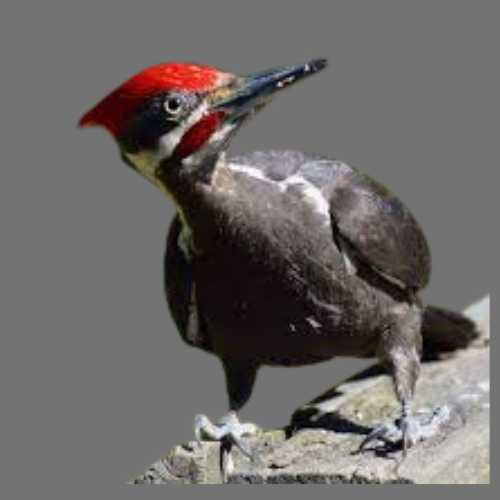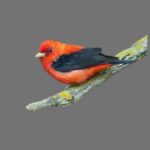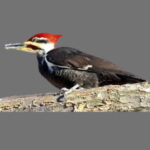The pileated woodpecker, with its striking red crest and impressive size, is one of the most iconic and captivating birds in North America. Known for its distinct drumming sounds and large rectangular holes in trees, this bird plays an essential role in the ecosystem. In this article, we delve into the fascinating world of the pileated woodpecker, exploring its physical features, behavior, habitat, and more.
Physical Features of the Pileated Woodpecker
The pileated woodpecker (Dryocopus pileatus) is the largest woodpecker species in North America, outside of the possibly extinct ivory-billed woodpecker. Measuring between 16 to 19 inches in length with a wingspan of 26 to 30 inches, its size rivals that of a crow.
Distinctive Plumage
The bird’s most notable feature is its vibrant red crest, which gives it a regal appearance. Its body is predominantly black, with white stripes running down the sides of its face and neck. In flight, white underwing markings become visible, adding to its striking appearance. Males can be distinguished from females by a red stripe, or “moustache,” on their cheeks.
Powerful Beak and Tail
The pileated woodpecker has a robust, chisel-like beak that it uses to drill into trees in search of food. Its stiff tail feathers provide support as it climbs tree trunks, enabling it to maintain balance while pecking.
Habitat and Behavior
Pileated woodpeckers are typically found in mature forests across North America, from Canada to the southeastern United States. They thrive in areas with abundant dead or decaying trees, which they use for nesting, roosting, and foraging.
Adaptations for Survival
These birds are highly adapted to life in the forest. Their strong claws and zygodactyl feet—two toes facing forward and two backward—allow them to grip tree trunks securely. Their long, barbed tongues help them extract insects from deep crevices.
Feeding Habits
Pileated woodpeckers primarily feed on carpenter ants and wood-boring beetle larvae. They also consume other insects, fruits, and nuts, especially during the winter when insects are less abundant. Their foraging behavior often leaves behind large, rectangular holes in trees, which can provide shelter for other species such as owls, bats, and small mammals.
Role in the Ecosystem
By creating these cavities, pileated woodpeckers contribute significantly to forest ecosystems. They help control insect populations and provide critical nesting and roosting sites for various species. Their activity promotes tree decomposition, which recycles nutrients back into the soil.
Breeding and Life Cycle
Pileated woodpeckers are monogamous, forming long-term pair bonds. During the breeding season, which typically occurs between April and July, males and females work together to excavate a nest cavity in a dead or decaying tree.
Raising the Young
Females lay between three to five eggs, which both parents incubate for about 15 to 18 days. After hatching, the chicks are fed regurgitated food by both parents. They fledge approximately 24 to 31 days after hatching but remain dependent on their parents for a few weeks before becoming fully independent.
Sounds and Communication
Pileated woodpeckers are known for their loud, resonant calls and distinctive drumming sounds. Their vocalizations include a series of loud, high-pitched “cuk-cuk-cuk” notes, often used to communicate territory or attract a mate.
Drumming Behavior
Drumming serves multiple purposes, including marking territory and signaling to potential mates. The rhythmic sound is produced by striking their beak against a resonant surface, such as a hollow tree.
Threats and Conservation Efforts
Despite their adaptability, pileated woodpeckers face several threats, including habitat loss and fragmentation due to deforestation and urban development. They are also occasionally hunted or disturbed by human activities.
Conservation Status
The pileated woodpecker is currently classified as a species of least concern by the International Union for Conservation of Nature (IUCN). However, conservation efforts are essential to ensure their continued survival, particularly in areas where forest habitats are being rapidly depleted.
Protecting Their Habitat
Programs aimed at preserving mature forests and promoting sustainable forestry practices play a crucial role in the conservation of pileated woodpeckers. Educating the public about the importance of dead trees and snags as essential habitats can also help support these birds.


